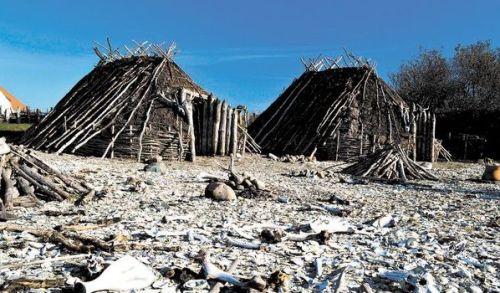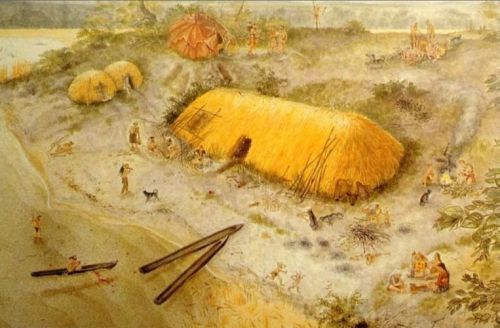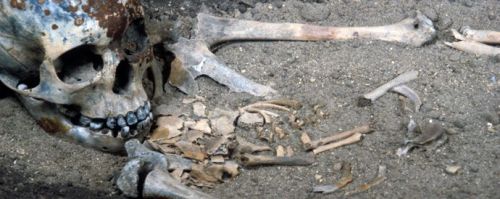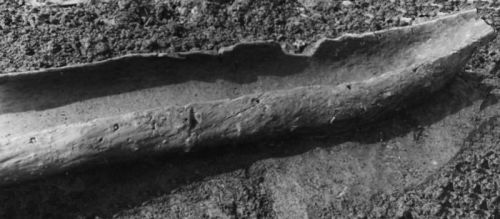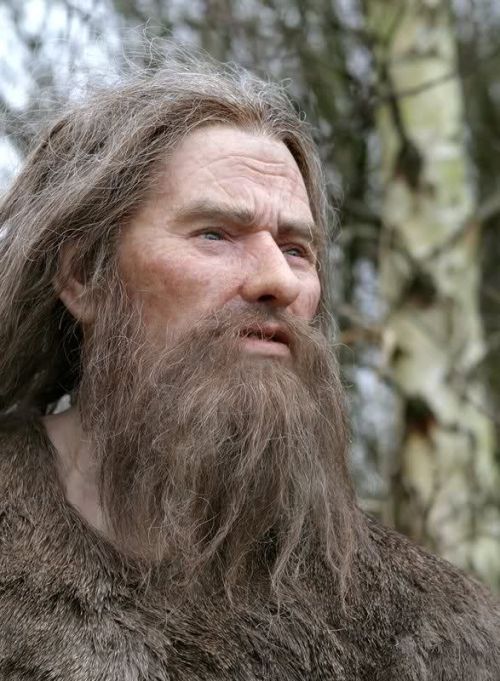#ertebølle culture
Ertebølle Culture
The Ertebølle culture was a culture of hunter and gatherers who lived between 5300BC-3950BC in modern day Denmark and southern Sweden. Even though the culture is linked to Denmark and southern Sweden, the people of the Ertebølle culture had virtually identical genes with the people of Northern Germany and the Northern Netherlands. The Dutch Swifterbant culture, about which I have written a post before, is the most similar culture to that of the Ertebølle culture.
The name of the culture itself is named after a kitchen midden found in the village of Ertebølle in Denmark. The Ertebølle people lived close to the coasts between modern day Netherlands and Denmark (pretty much the later territory of the kingdom of Frisia) and their food consisted of a lot of sea food like mussels, oysters and fish.
The climate of Denmark was wildly different during the end of the mesolithic era compared to the climate in which the Germanic people lived, the iron age. Temperatures were about three degrees celcius higher than they are today and the sea level was 3 meters higher than today. Denmark, Northern Germany and the Netherlands was filled with primeval lush forests and rich with a wide range of animals and edible plants. Perfect lands for a hunter and gathere culture.
The Ertebølle culture is mostly known for its kitchen midden remnants which consisted of huge piles of shells of seafood. These kitchen middens could be very long, the kitchen midden after which the culture is named, is about 140 meters long and just full with piles of seashells. Not only remains of seafood have been discovered in these middens, bones of otter, wolf, deer, boar, auroch, bear, fox, lynx, eagle, beaver and seals have also been found at these kitchen middens.
Their main weapon of hunting these animals was the bow and arrow but just like their Swifterbant relatives, they used fishing nets in order to catch their seafood. The Ertebølle culture was truly one of the very first cultures in the world that established a coastal fishermen’s lifestyle.
The homes of these Ertebølle people looked rather different if you compare them to the houses of other European mesolithic people. The Ertebølle people lived in small cottages made of wood and sometimes with thatched roofs. Some of the cottages might have been covered in animal skins. They were however also able to make wattle walls. The climate in Denmark was warm enough during the end of the mesolithic age to not have needed special isolated homes against the cold.
The Ertebølle people also hollowed out trees to make canoes in order to travel on rivers and lakes. They could have been used to transport goods to another settlement just like what the Swifterbant culture people did but they could also have been used for fishing of course.
How did these Ertebølle people look like? We do not exactly know how they should have looked like but we have some ideas based on DNA research of several remains. The average life expectancy was only 35 years old but remains of people older than 60 have been found which suggests that infant mortality was quite high. Sex determination is also difficult to perform since the females were actually quite robust. The DNA of the Ertebølle and Swifterbant people are linked to the Cro Magnon, these people were fairly light skinned with possible blue eyes.
The Ertebølle culture is very interesting to explore and perhaps, if more settlements were found across the coastline between the Netherlands and Denmark, the Swifterbant and the Ertebølle people were actually one single culture instead of two distinctly different ones. This is very well possible judging by the fact that they are genetically identical and lived very similar lifes.
Here are photos of:
Ertebølle cottage reconstruction,
Artists interpretation of an Ertebølle cottage,
The remains of an Ertebølle girl from Tybrind Vig,
Ertebølle flint tools,
Ertebølle canoe,
Reconstruction of a face of a Dutch Swifterbant which is also how an Ertebølle male would have looked like since the two cultures are genetically identical,
Map showing Ertebølle finds/territory,
Post link

